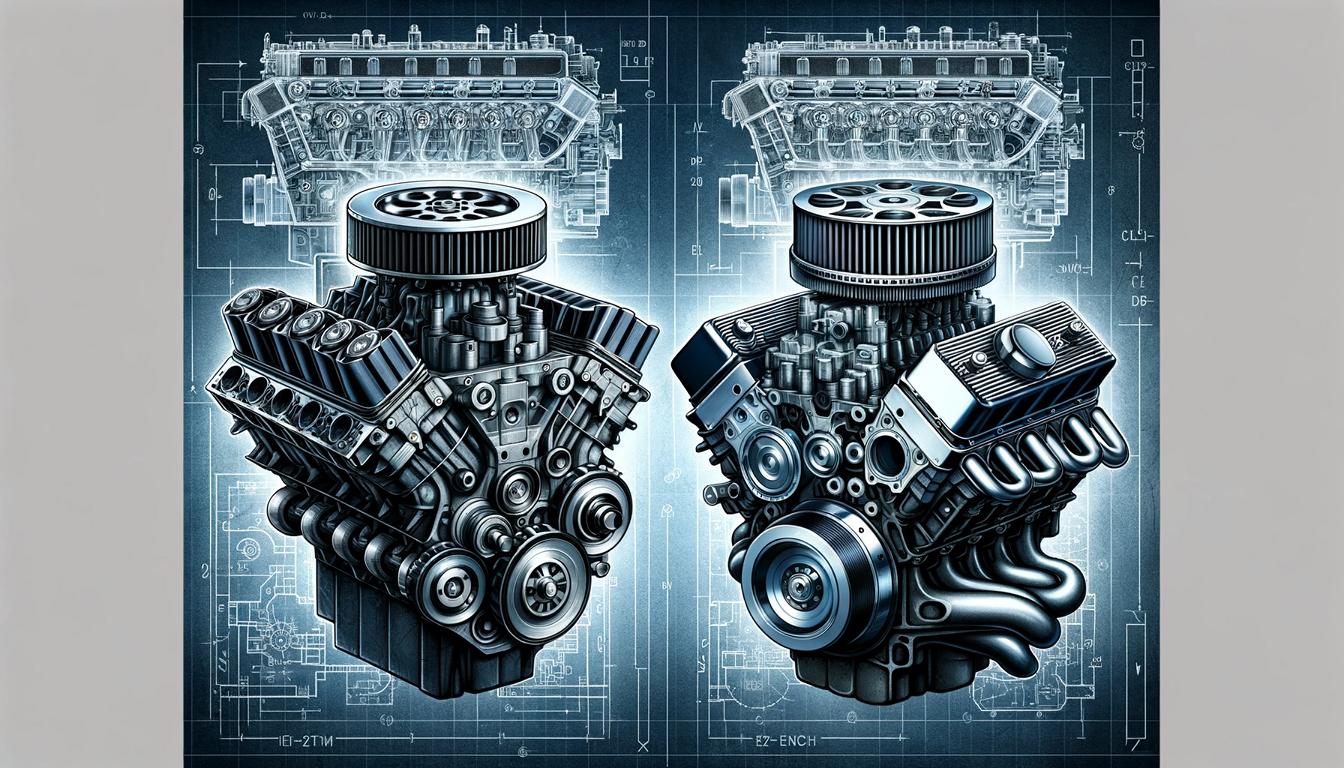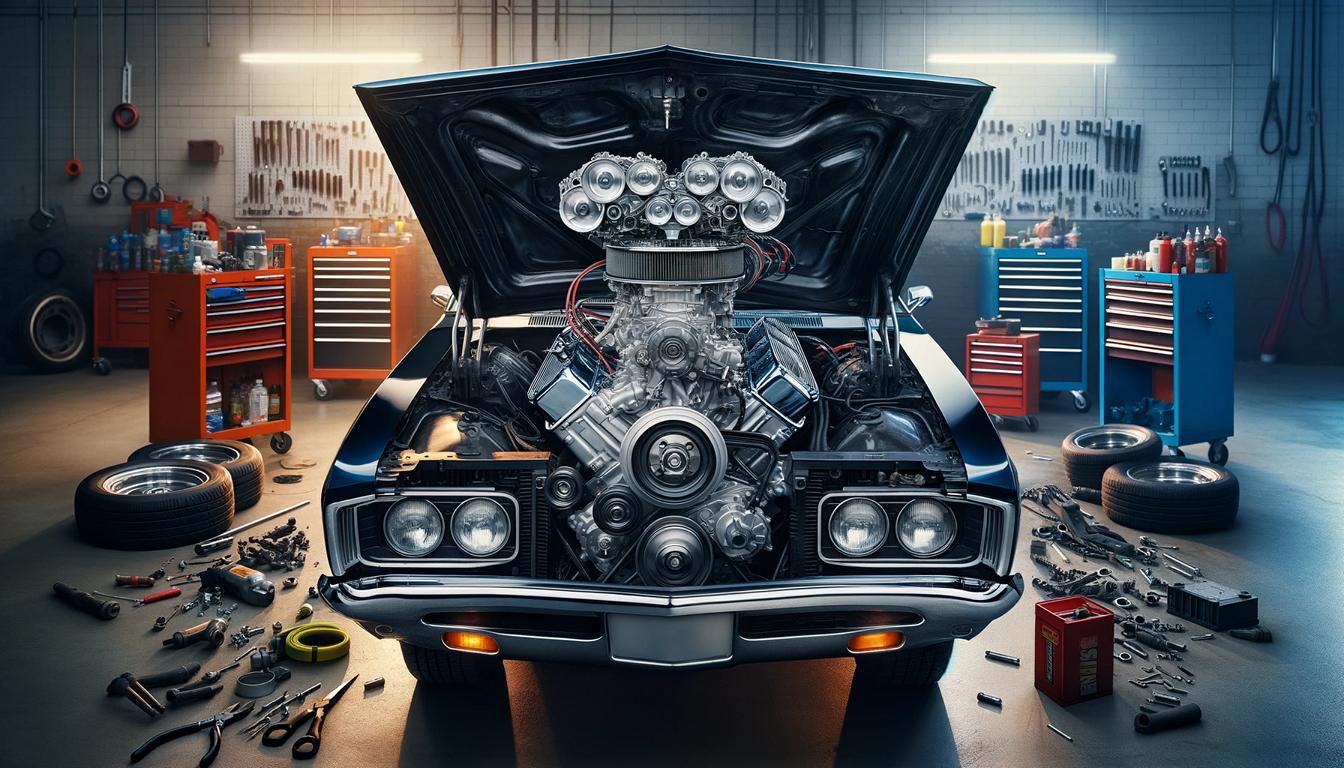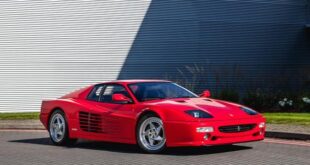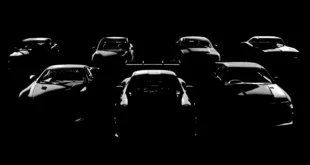When it comes to American V8 the quote “There's no replacement for displacement“ with that the preference for large-volume engines underlined. The terms Small block and Big block However, they are more than just descriptions of the displacement - they delve deep into the philosophy of engine construction. Contrary to popular belief, Small block and Big block would only differ based on the size of the displacement, in reality they play Shape and the physical dimensions the engines play a crucial role. The Small block is characterized by its compact design, which has less material between the cylinders and smaller dimensions overall.
Small Block vs. Big Block
At a Big block On the other hand, the dimensions of the engine are available not in the foreground, so often a large cylinder bore distance can be found. A good guide to distinguishing is the 4-inch rule per cylinder Cylinder bore; If the motor exceeds the value, it tends to Big block. The displacement of 400 in³ (around 6,7 liters) is sometimes used as a rough guideline, but the information is sufficient for a clear demarcation not because there are also big blocks with less displacement than certain small blocks. Historically, the terms have Small block and Big block their origin Chevrolet.
| Vehicle | engine type | Capacity | Performance | Features |
|---|---|---|---|---|
| Chevrolet Camaro SS (2021) | Small block | 6.2L | 455 PS | LT1 V8 |
| Ford Mustang GT (2021) | Small block | 5.0L | 450 PS | Coyote V8 |
| Dodge Durango R/T (2021) | Small block | 5.7L | 360 PS | HEMI V8 |
| Chevrolet Corvette (2021) | Small block | 6.2L | 490 PS | LT2 V8, mid-engine layout |
| Jeep Grand Cherokee (2021) | Small block | 5.7L | 357 PS | HEMI V8, AWD |
| Chevrolet Chevelle SS (1970) | Big block | 7.4L (454 in³) | 450 PS | LS6 V8, muscle car |
| Ford Mustang Boss 429 (1969) | Big block | 7.0L (429 in³) | 375 PS | Boss 429 engine, rare collector's car |
| Dodge Charger R/T (1969) | Big block | 7.2L (440 in³) | 375 PS | Magnum V8, cult status through film |
| Plymouth Hemi Cuda (1971) | Big block | 7.0L (426 in³) | 425 PS | HEMI V8, muscle car legend |
| Chevrolet Corvette Stingray (1971) | Big block | 7.4L (454 in³) | 365 PS | LS5 V8, Classic Corvette |
In 1955 the manufacturer revolutionized the market with a new compact V8, the Original small block with a displacement of 4,3 liters, which is economical Mass production made possible. The first big block followed just three years later with the introduction of Chevrolet's "W series", one 5,7 liter V8. Despite its origins with Chevrolet, the terms are now also generally used for the engine blocks of other US manufacturers such as Ford, Dodge and Chrysler .
The V8 is threatened with extinction!
In the 21st century, in times of strict emissions regulations, V8 engines have become rare in Central Europe. Especially the larger and more emission-intensive ones Big Blocks have lost popularity. In Germany there are vehicles like that Ford Mustang, the Chevrolet Corvette And diverse Ram pickups, which maintain the tradition of the American V8. In the United States, Chevrolet keeps the flame selling small blocks and big blocks as “Crate Engines“ on fire - separate engines that are available for individual projects or replacement in existing vehicles.
| Property | Small block engine | Big block engine |
|---|---|---|
| Weight | Lighter, about 100-200 kg | Heavier, about 150-250 kg |
| Physical size | Compact, smaller space requirement | Bigger, more space required |
| Capacity | Generally up to 6.2L | Generally from 6.2L upwards |
| Performance | Good performance, better for daily use | Higher power maximums, often in performance vehicles |
| torque | Lower torque at higher speeds | High torque at lower speeds |
| fuel consumption | More efficient with a smaller displacement | Less efficient, higher consumption |
| Typical application | Sports cars, light trucks, everyday vehicles | Heavy trucks, racing, muscle cars |
| Tuning potential | High potential, many aftermarket parts available | Also high potential, but often more expensive to tune |
| spread | Very common and popular because of its versatility | Less common, often in special performance classes |
| Typical sound | High-speed, aggressive sound | Deep, rumbling sound |
Details – Small Block vs. Big Block:
- Small Block vs. Big Block: Differentiation not primarily by displacement, but by the Design and external dimensions
- Small block:
- Compact conception
- Less material between cylinders
- Introduced by Chevrolet in 1955
- Original displacement: 4,3 liters
- Configuration: 90 degree V8
- Big block:
- Generous external dimensions, without regard to compactness
- Cylinder bore: Rule of thumb > 4 inches per cylinder
- Sometimes associated with a displacement of > 400 in³ (6,7 liters)
- Featured with Chevys “W Series” in 1958
- Initial displacement: 5,7 liters
- Chevrolet's V8 engines:
- Small block and big block terms come from Chevrolet
- Today's availability as “Crate Engines” in the USA
thematically relevant posts
In our category Tips, products, information & Co We have reviews of car or accessories manufacturers, new ones Tuning Wiki Terms or one or the other Leak veröffentlicht.
 tuningblog.eu Your magazine about tuning the car
tuningblog.eu Your magazine about tuning the car




